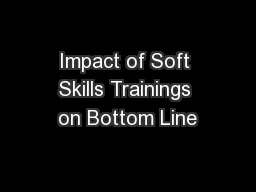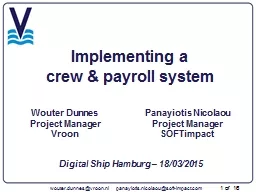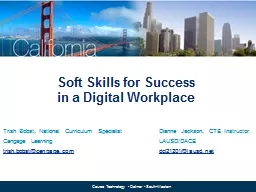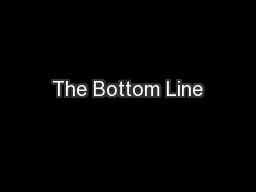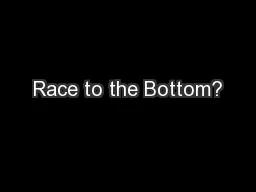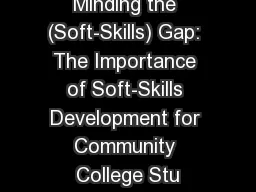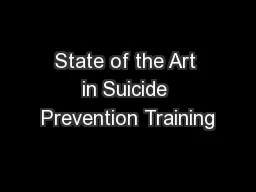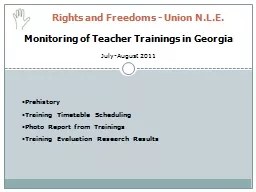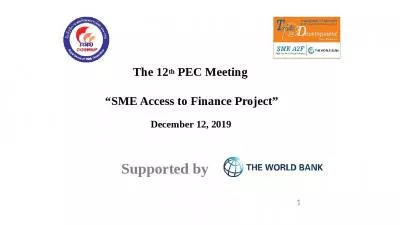PPT-Impact of Soft Skills Trainings on Bottom Line
Author : luanne-stotts | Published Date : 2015-10-30
Skills gap skills gap is a significant gap between an organizations current capabilities and the skills it needs to achieve its goals Despite a large pool of
Presentation Embed Code
Download Presentation
Download Presentation The PPT/PDF document "Impact of Soft Skills Trainings on Botto..." is the property of its rightful owner. Permission is granted to download and print the materials on this website for personal, non-commercial use only, and to display it on your personal computer provided you do not modify the materials and that you retain all copyright notices contained in the materials. By downloading content from our website, you accept the terms of this agreement.
Impact of Soft Skills Trainings on Bottom Line: Transcript
Download Rules Of Document
"Impact of Soft Skills Trainings on Bottom Line"The content belongs to its owner. You may download and print it for personal use, without modification, and keep all copyright notices. By downloading, you agree to these terms.
Related Documents

